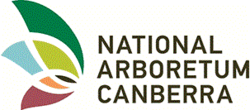General Community Clubs
National Bonsai and Penjing Collection
CHIEF MINISTER TREASURY AND ECONOMIC DEVELOPMENT DIRECTORATE

About Us
See an amazing 3D virtual tour of the Collection by Canberra business Photostat3D - brilliant!
The living artworks of this national collection feature some of the finest miniature trees and forests in the world, created by some of Australia's leading bonsai and penjing artists.
About 80 bonsai and penjing trees and forests are usually on display, in a variety of traditional and modern styles, with both Australian native and exotic trees.
Bonsai and penjing are like living sculptures, shaped over time to convey concepts, ideas, emotions and stories. The trees are designed to reflect trees or landscapes in nature; to create a sense of calm and peacefulness and broaden the viewers' cultural understanding.
The oldest trees in the Collection are more than 60 years old, much younger than the oldest known bonsai and penjing in the world at over 800 years old. More about bonsai and penjing.
The Collection's bonsai and penjing are all donated or loaned by the artists, their families or friends.
Bonsai Welcome Garden "Yokoso Niwa"

The Bonsai Welcome Garden, or "Yokoso Niwa" is inspired by Japanese bonsai and moss gardens. The garden represents a landscape of mountains, symbolised by the large rocks, with a dry river bed flowing between them.
Plants include Scleranthus biflorus and uniflorus, local mosses, Lomandra longifolia 'Tanika', Macrozamia moorei and Cycas revoluta. The Japanese maple is Acer palmatum ‘Dissectum Inabe Shidare’.
The Niwaki pines
Just outside the National Bonsai and Penjing Collection are two Japanese black pines (Pinus thunbergia) styled as niwaki, similar to bonsai but on a larger scale. These trees are the oldest Japanese black pines in Australia, grown in 1951 from the first Japanese black pine seeds imported into Australia by pioneers of bonsai in Australia, Dorothy and Vita Koreshoff. Japanese black pines are native to Japan and South Korea.
Rare fossil among the bonsai
A 165 million year old petrified tree stump is now on display in the National Bonsai and Penjing Collection. This rare fossil was kindly donated by the National Dinosaur Museum. Be sure to see it on your next visit. See the full story.
Volunteering
The collection is supported by enthusiastic and knowledgeable volunteers and the broader bonsai and penjing community. New volunteers are always welcome and free training is provided. For more information, contact the Curator, Leigh Taafe on 02 6207 8483, email: [email protected]
Quick Facts About The Region
Extra Information
Accessible By Anyone
Access Fee No fee
Age Ranges All ages
Tags
Native Plants, Plants and Gardening, Volunteering


